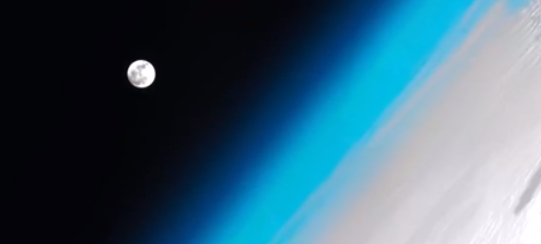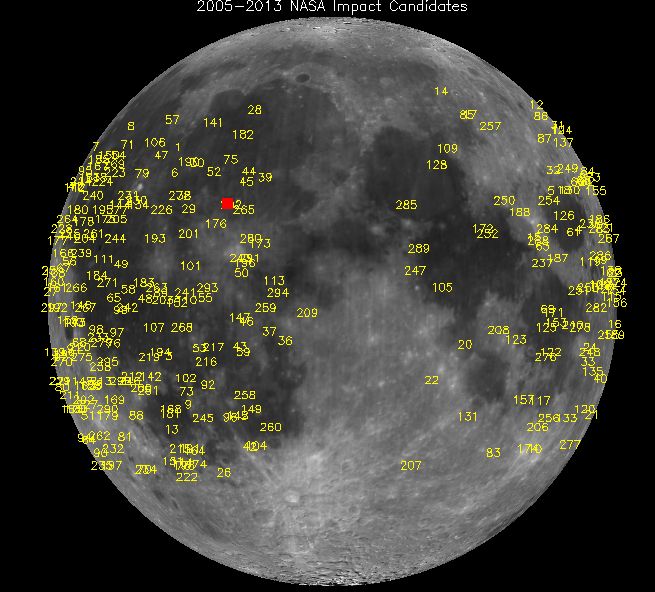Earth and Moon pelted by meteors – Impact causes bright explosion on the Moon

A meteor with estimated weight of 40 kg, approximately 0.3 – 0.4 meters wide, and traveling at speed of 90 123 km/h hit the lunar surface in Mare Imbrium on March 17, 2013. The resulting explosion packed as much punch as 5 tons of TNT.
"It exploded in a flash nearly 10 times as bright as anything we've ever seen before", said Bill Cooke of NASA's Meteoroid Environment Office.
Anyone looking at the Moon at the moment of impact could have seen the explosion without a telescope. For about one second, the impact site was glowing like a 4th magnitude star.
Ron Suggs, an analyst at the Marshall Space Flight Center, was the first to notice the impact in a digital video recorded by one of the monitoring program's 14-inch telescopes. "It jumped right out at me, it was so bright," he recalls.

Cooke believes the lunar impact might have been part of a much larger event.
"On the night of March 17, NASA and University of Western Ontario all-sky cameras picked up an unusual number of deep-penetrating meteors right here on Earth," he says. "These fireballs were traveling along nearly identical orbits between Earth and the asteroid belt."
“My working hypothesis is that the two events are related, and that this constitutes a short duration cluster of material encountered by the Earth-Moon system," says Cooke.This means Earth and the Moon were pelted by meteoroids at about the same time.
Controllers of NASA's Lunar Reconnaissance Orbiter have been notified of the strike. The crater could be as wide as 20 meters, which would make it an easy target for LRO the next time the spacecraft passes over the impact site. Comparing the size of the crater to the brightness of the flash would give researchers a valuable "ground truth" measurement to validate lunar impact models.


For the past 8 years, NASA astronomers have been monitoring the Moon for signs of explosions caused by meteoroids hitting the lunar surface. "Lunar meteor showers" have turned out to be more common than anyone expected, with hundreds of detectable impacts occurring every year. The brightest impact recorded so far was detected on March 17, 2013, in Mare Imbrium, and is marked by the red square.
Unlike Earth, which has an atmosphere to protect it, the Moon is airless and exposed. Lunar meteors don't require oxygen or combustion to make themselves visible. They hit the ground with so much kinetic energy that even a pebble can make a crater several feet wide. The flash of light comes not from combustion but rather from the thermal glow of molten rock and hot vapors at the impact site.
Since the monitoring program began in 2005, NASA’s lunar impact team has detected more than 300 strikes, most orders of magnitude fainter than the March 17th event. Statistically speaking, more than half of all lunar meteors come from known meteoroid streams such as the Perseids and Leonids. The rest are sporadic meteors–random bits of comet and asteroid debris of unknown parentage.
Featured image and source: Science@NASA

Commenting rules and guidelines
We value the thoughts and opinions of our readers and welcome healthy discussions on our website. In order to maintain a respectful and positive community, we ask that all commenters follow these rules:
We reserve the right to remove any comments that violate these rules. By commenting on our website, you agree to abide by these guidelines. Thank you for helping to create a positive and welcoming environment for all.